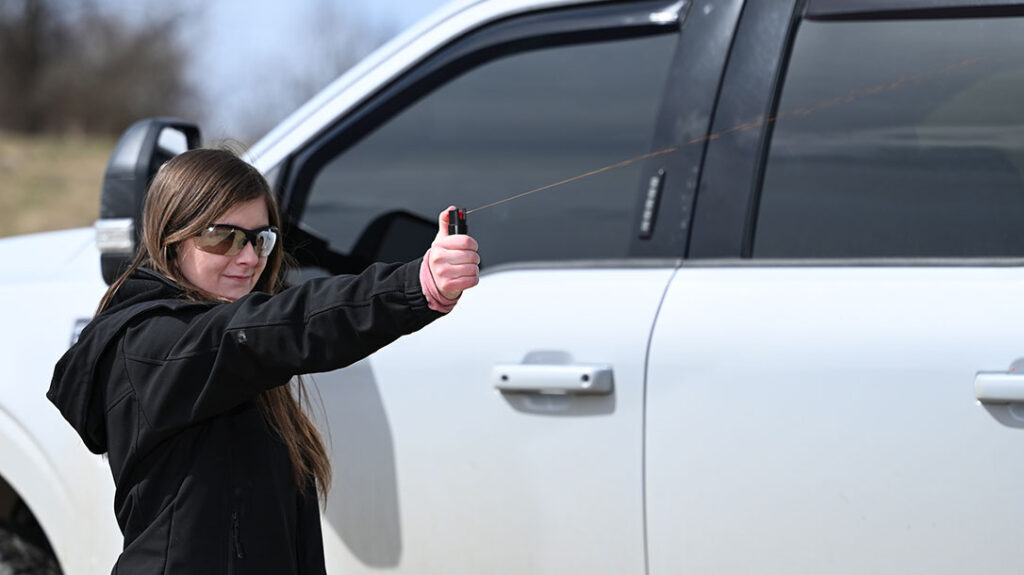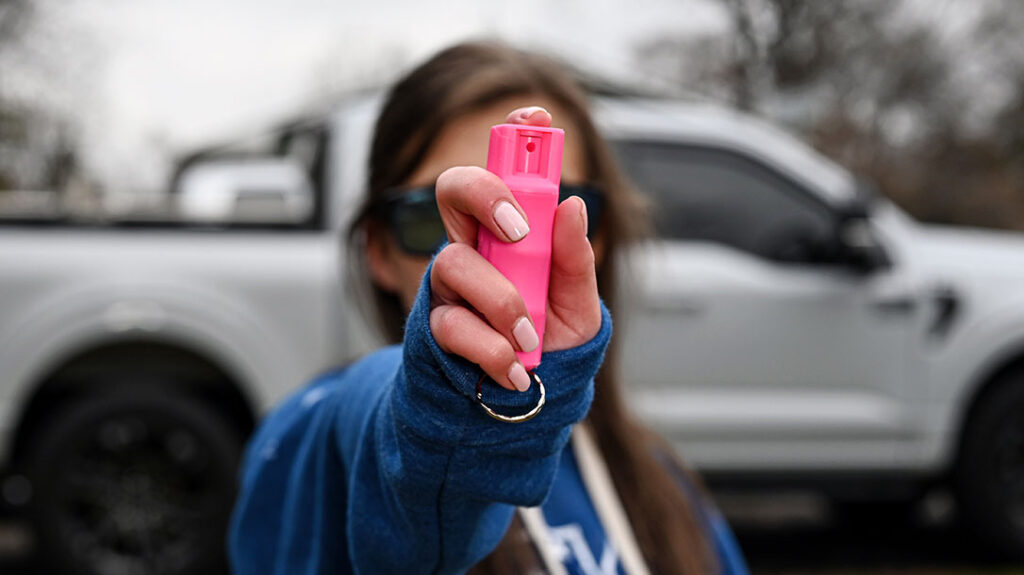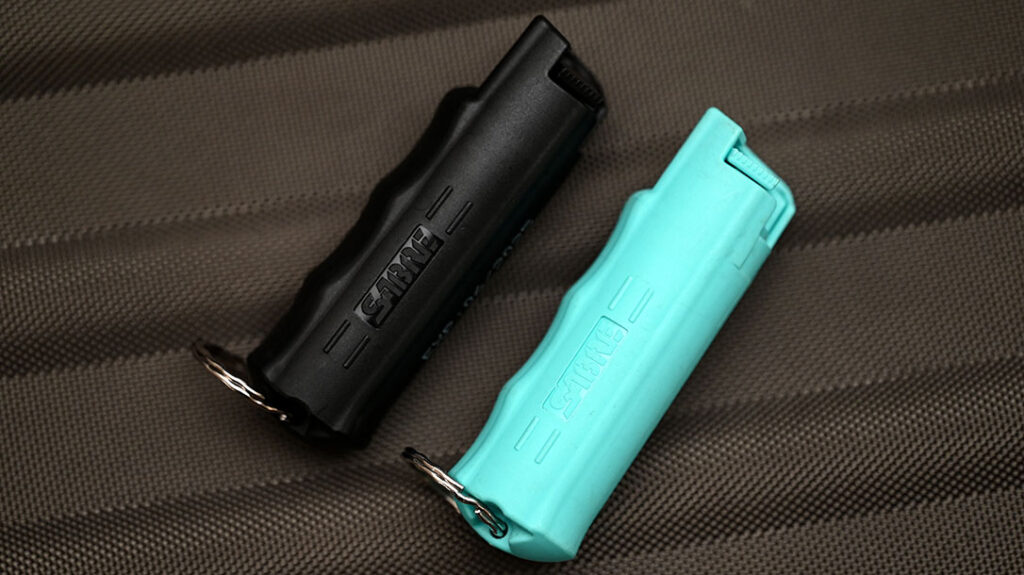Pepper gel and pepper spray are two commonly used nonlethal self-defense tools. Both are affordable, easy to use, and help keep you safe. However, based on these similarities, I cannot help but wonder what exactly sets these two tools apart. For this reason, I am left asking the important question—which is better? So, in this test of pepper gel vs pepper spray, we take a look at the pros and cons of each.
Pepper Gel vs Pepper Spray: A Comparison
What is Pepper Spray?
Pepper spray is a liquid irritant released from an aerosol can or bottle. It is designed to cause an inflammatory response to the eyes, nose, throat, and lungs.
Common effects of pepper spray use are burning, watering of the eyes, coughing, difficulty breathing, and temporary blindness. These effects can last up to 30 minutes, providing plenty of time to escape a dangerous situation and get help.
What is Pepper Gel?
Much like pepper spray, pepper gel is composed of the same liquid irritant, oleoresin capsicum (OC), an oily extract from pepper plants. The OC in pepper gel causes the same effects on an attacker as the OC in pepper spray.

However, the major difference between the two is the consistency. Rather than dispensing as a spray or mist as the spray formula does, pepper gel is formulated to be thicker, sticker, and released in the targeted stream.
This formula can be used to your advantage because it makes it harder for attackers to wash or wipe off. However, it is important to note that pepper gel will only affect areas it encounters. Most pepper gels on the market can affect an attacker for up to 45 minutes.
Range
In any self-defense situation, your number one goal should be to create as much distance as possible. You do not want to give your attacker any type of advantage to gain the upper hand. One of the greatest things about pepper gel and spray is that they’re intended to be used at a distance.
In terms of range, pepper gel wins hands down, thanks to its thicker formula. Most pepper spray can shoot about 8 – 12 feet, while pepper gel can aim up to 18 feet.
Wind Blowback
When using self-defense tools such as pepper spray or gel, weather conditions play a fundamental role in their operation. If pepper spray or gel is used on a windy day, there’s a likely chance that the oleoresin capsicum can blow back at you. As a result, this can cause you to be affected, along with your attacker.
Out of these two tools, pepper gel is the safer option because it is made with a heavier formula. So it is less likely to atomize in the air.
Since pepper spray is dispensed like a mist, there’s a greater chance that the droplets can blow back onto you. However, factors such as the angle at which you stand when spraying can help reduce wind blowback. Just to be on the safe side, I recommend that you use pepper gel on windy days.

Where Can Pepper Gel & Spray Be Used?
Both pepper spray and pepper gel are legal in all 50 states. However, it is always a good idea to investigate your state’s local laws because some areas have regulations on the percentage of oleoresin capsicum allowed.
Now, pertaining to indoor and outdoor use, ideally both tools can be used in both environments. But pepper gel is typically safer to use indoors because of how it dispenses.
Closing Remarks
Based on factors such as range, effectiveness, cross-contamination, and where you can use them, pepper gel wins hands down. Pepper gel sprays farther and is less likely to blow back onto you. Likewise, it is formulated to make it difficult for your attackers to wash or wipe it off.
Yet, regardless of all these advantages, I still am an avid user of pepper spray. Specifically because it is just as effective at repelling bad guys. Nonetheless, whichever one you decide to carry, both pepper spray and gel allow you to make your safety a number one priority.



Didn’t find what you were looking for?
Read the full article here




